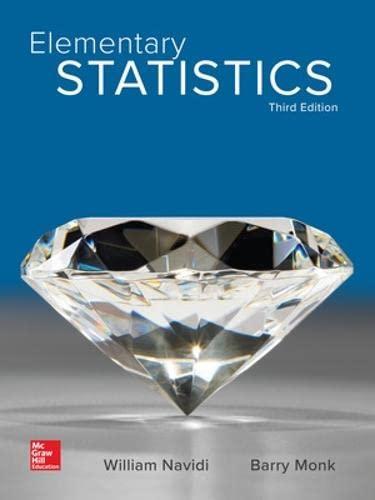Radon is a naturally occurring radioactive substance that is found in the ground underneath many homes. Radon
Question:
Radon is a naturally occurring radioactive substance that is found in the ground underneath many homes. Radon detectors are often placed in homes to determine whether radon levels are high enough to be dangerous. A radon level less than 4.0 picocuries is considered safe. Because levels fluctuate randomly, the levels measured by detectors are not exactly correct, but are instead normally distributed. It is known from physical theory that when the true level is 4.1 picocuries, the measurement made by a detector over a one-hour period will be normally distributed with mean 4.1 picocuries and standard deviation 0.2 picocurie.
a. If the true level is 4.1, what is the probability that a one-hour measurement will be less than 4.0?
b. If the true level is 4.1, would it be unusual for a one-hour measurement to indicate that the level is safe?
c. If a measurement is made for 24 hours, the mean will still be 4.1 picocuries, but the standard deviation will be only 0.04 picocurie. What is the probability that a 24-hour measurement will be below 4.0?
d. If the true level is 4.1, would it be unusual for a 24-hour measurement to indicate that the level is safe?
Step by Step Answer:






